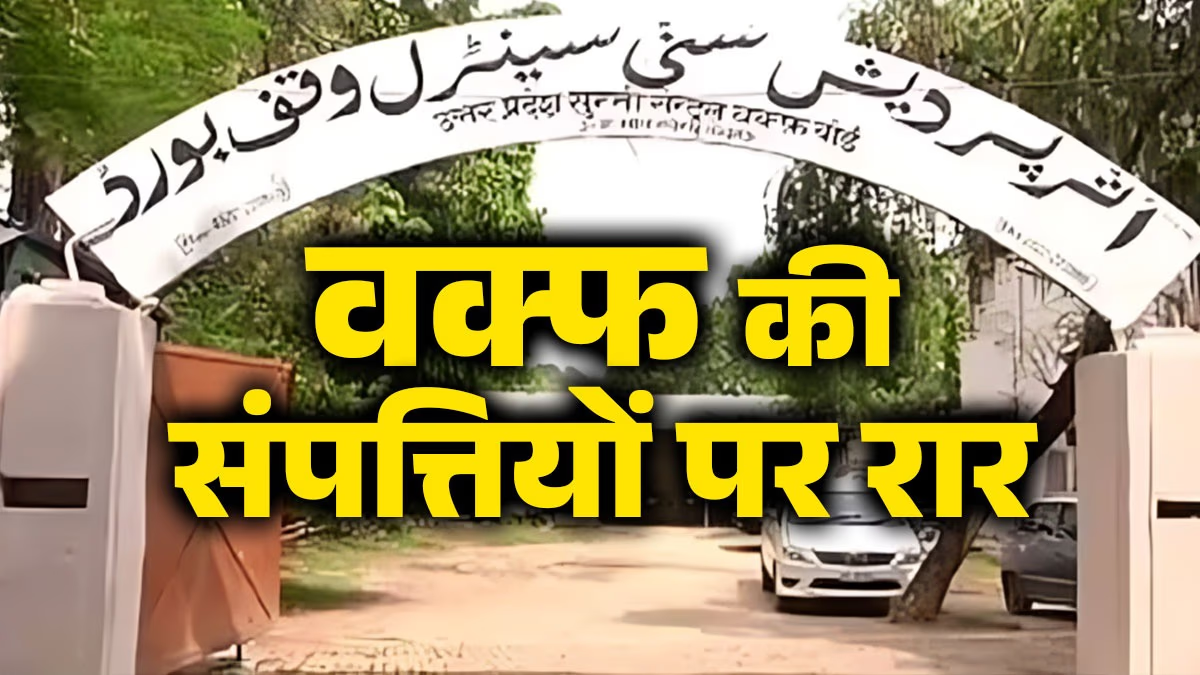The central government led by Narendra Modi is ready to implement significant amendments to the Waqf Board Act. The Union Cabinet has approved nearly 40 amendments, a crucial step toward redefining the powers of the Waqf Board. The government aims to curb the powers of the Waqf Board to declare any property as 'Waqf property'.
Under the 40 proposed amendments, claims on properties by Waqf Boards will mandatorily be verified. The Muslim Personal Law Board has opposed this move, stating that it will not tolerate any interference in the legal status and powers of the Waqf Board.
What is Waqf?
'Waqf' originates from the Arabic word 'Waqf', meaning 'to stop'. It refers to properties dedicated purely for religious or charitable purposes under Islamic law. In Islam, it's a type of charitable endowment. Waqf involves properties donated by Muslims, which can be immovable or movable. This wealth is managed under the Waqf Board. Once a property’s ownership changes, it is considered transferred from the owner to Allah, making it unalterable.
Related Read: The Government Plans to Reduce Waqf Board's Vast Powers, Learn How the Waqf Board Operates
The principle of 'Once a Waqf, Always a Waqf' applies here—meaning once a property is declared Waqf, it remains so forever. Each state has a Waqf Board to manage Waqf properties.
Historical Context
In March 2014, just before the Lok Sabha elections, the Congress government gifted 123 significant properties in the national capital to the Delhi Waqf Board. Former Prime Minister Manmohan Singh stated during the launch of the National Waqf Development Corporation Limited in 2014, that properties under the Waqf Board could be utilized for the socio-economic development of the Muslim community.
Changes in 2013
In 2013, further amendments were made to the Act, granting Waqf Boards unlimited rights to seize properties, which couldn't be contested in court. Essentially, a religious body was given unlimited claim rights over properties under the guise of Muslim donation, preventing plaintiffs from seeking judicial recourse.
Doubling of Properties in 15 Years
It was said that amendments made by the UPA government led the Waqf Board to act like land mafias, seizing private and public lands, and even temple and gurdwara properties. Originally, there were about 52,000 Waqf properties across India. By 2009, there were 300,000 registered Waqf properties spread across 4 lac acres, doubling over the last 15 years.
Currently, Waqf Boards control approximately 872,321 immovable properties across 940,000 acres, and 16,713 movable properties valued at an estimated 1.2 lac crore rupees. These properties are managed by various state Waqf Boards, and their details are recorded on the Waqf Assets Management System of India (WAMSI) portal.
Related Read: What is the Waqf Act? What Amendments are Modi Government Planning and Why? Arguments Against the Changes
Largest Landholder After Railways and Armed Forces
The Waqf Board is India’s third-largest landowner after the armed forces and Indian Railways. Uttar Pradesh has the most significant Waqf property holdings, with the Sunni Board possessing 210,239 properties and the Shia Board holding 15,386. Each year, thousands of individuals donate properties to the Board as Waqf, continuously enhancing its wealth.
Kejriwal Government’s Generosity
In 2022, an RTI response revealed that Delhi’s Chief Minister Arvind Kejriwal-led AAP government had allocated over 101 crores of public funds to the Delhi Waqf Board since coming into power in 2015, with 62.57 crores given in 2021 alone. In 2019, Kejriwal mentioned that the residence of India’s richest person in Mumbai is built on Waqf property. He said, “If our government were here, we would have demolished the construction.”
Misuse of Waqf Act Examples
There are currently 30 Waqf Boards in the country, which have violated property rights and temple lands. In Tamil Nadu, the Waqf Board recently claimed ownership of an entire village, including a 1500-year-old Hindu temple, which left villagers shocked. It is absurd that a 1400-year-old religious board claims a 1500-year-old temple.
In Haryana’s Yamunanagar district’s Jathlana village, the power of Waqf was evident when land belonging to a Sikh Gurdwara was transferred to Waqf. There is no historical record of a Muslim settlement or mosque on this land.
In November 2021, Surat Municipal Corporation headquarters in Muglisara was declared as Waqf property. The claim was justified by stating that during Shah Jahan’s reign, the property was donated as Waqf property to his daughter, thus still justifiable nearly 400 years later.
In 2018, the Sunni Waqf Board told the Supreme Court that the ownership of the Taj Mahal belongs to Almighty, and for practical purposes, it should be listed as Sunni Waqf Board property. When asked to present signed documents from Shah Jahan, the body claimed the monument to be Almighty’s property, lacking any signed documents but insisting on property rights.




